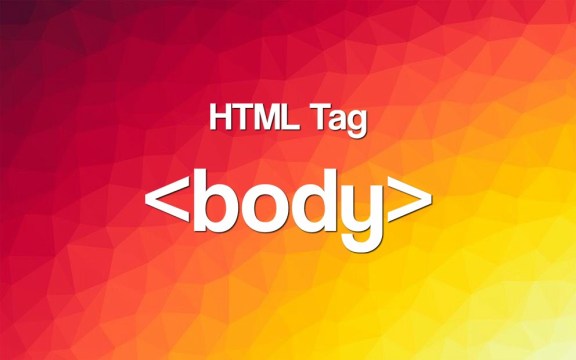The <body> tag is a fundamental element in HTML (Hypertext Markup Language) used to define the body of an HTML document. Everything that appears on a webpage, such as text, images, links, and multimedia, is typically contained within the <body> tags. It's essentially the content area where the visible elements of a webpage are placed.
Here's a basic example of how it's used:
<!DOCTYPE html>
<html>
<head>
<title>My Webpage</title>
</head>
<body>
<h1>Welcome to My Webpage</h1>
<p>This is some text content.</p>
<img src="image.jpg" alt="An image">
<a href="https://example.com">Click here</a> to visit another website.
</body>
</html>
In this example, the <body> tag contains various elements such as headings (<h1>), paragraphs (<p>), an image (<img>), and a hyperlink (<a>). These elements will be displayed in the body of the webpage when it's rendered in a web browser.
Syntax and Attributes
The <body> tag in HTML defines the main content of the HTML document. It contains all the content that is visible to the user, including text, images, links, forms, and other elements. Here's the syntax and commonly used attributes for the <body> tag:
Syntax:
<!DOCTYPE html>
<html>
<head>
<title>Document Title</title>
</head>
<body>
<!-- Content goes here -->
</body>
</html>
Attributes:
- The
<body>tag does not have any specific attributes defined in the HTML specification. However, it can accept global attributes that are applicable to most HTML elements, such asclass,id,style,title,lang,dir, etc.
Example:
<!DOCTYPE html>
<html lang="en">
<head>
<meta charset="UTF-8">
<meta name="viewport" content="width=device-width, initial-scale=1.0">
<title>Document Title</title>
</head>
<body>
<h1>Hello, world!</h1>
<p>This is the main content of the HTML document.</p>
</body>
</html>
In this example:
- The
<body>tag contains the main content of the HTML document, including headings (<h1>), paragraphs (<p>), and other elements. - The
langattribute is used to specify the language of the content (lang="en"for English). - The
<meta>tags within the<head>section specify the character encoding (UTF-8) and viewport settings for responsive design.
The <body> tag is a fundamental part of every HTML document, enclosing the content that is directly visible to the user. It's where the majority of the page's content and structure are defined, making it essential for creating accessible and well-structured web pages.
Accessibility Considerations
Accessibility considerations for the <body> tag in HTML primarily focus on ensuring that the content within the body is perceivable, operable, understandable, and robust for all users, including those with disabilities. Here are some key considerations:
Semantic Structure: Use semantic HTML elements within the <body> tag to provide meaningful structure to the content. Properly structured content aids users who rely on assistive technologies in understanding the hierarchy and organization of the page.
Text Alternatives: Provide descriptive text alternatives for non-text content, such as images, within the <body> tag. Use the alt attribute for images and provide transcripts or descriptions for multimedia content like audio and video.
Keyboard Accessibility: Ensure that all interactive elements within the <body> tag, such as links, buttons, and form controls, are accessible via keyboard navigation. Users should be able to navigate to and interact with all content without requiring a mouse.
Color Contrast: Maintain sufficient color contrast between text and background colors within the <body> tag to ensure readability for users with low vision or color vision deficiencies. Aim for a contrast ratio of at least 4.5:1 for normal text and 3:1 for large text.
Responsive Design: Implement responsive design techniques within the <body> tag to ensure that content is accessible and usable across a wide range of devices and screen sizes. Use CSS media queries to adapt the layout and styling based on viewport size.
Semantic Markup: Use HTML elements appropriately to convey the meaning and structure of the content within the <body> tag. Avoid using elements solely for presentational purposes and ensure that the document follows a logical and semantic structure.
Testing with Assistive Technologies: Conduct thorough testing with assistive technologies such as screen readers and keyboard navigation tools to ensure that all content within the <body> tag is accessible and usable by users with disabilities. Address any accessibility issues that arise during testing.
By considering these accessibility considerations, you can ensure that the content within the <body> tag is accessible and usable by all users, regardless of their abilities or assistive technology usage.
→ Utilizing the <abbr> HTML Tag (syntax, attributes, compatibility)
Compatibility and Browser Support
The <body> tag is a fundamental part of every HTML document and is universally supported across all modern web browsers. Here's an overview of its compatibility and browser support:
Compatibility:
- The
<body>tag has been a core element of HTML since the early versions of HTML, including HTML 2.0, HTML 3.2, HTML 4.01, XHTML, and HTML5. It's an essential element for defining the main content of a web page.
Browser Support:
- Chrome: Fully supported.
- Firefox: Fully supported.
- Safari: Fully supported.
- Edge: Fully supported.
- Internet Explorer: Fully supported since IE6.
The <body> tag is recognized and rendered appropriately by all major modern web browsers. It serves as the container for the visible content of an HTML document, including text, images, links, forms, and other elements.
Overall, you can rely on consistent support for the <body> tag across all modern web browsers, making it a reliable and essential element for creating accessible and well-structured web pages.
